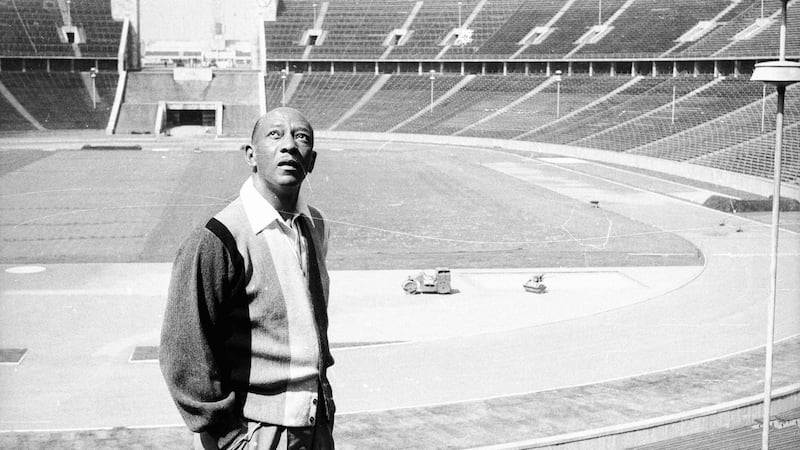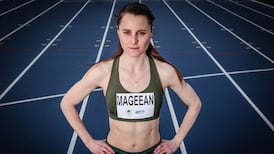Trace the trail of track and field history and before any Carl Lewis there had to be a Jesse Owens to help pave the way.
Before a Haile Gebrselassie, a Paavo Nurmi, before Steve Cram and Steve Ovett there had to be Gunder Hagg and Arne Andersson. And long before Daley Thompson there had to be a Jim Thorpe.
Not in terms of the advancement of athletic performances, but the modern advancement of the sport itself. Because trace that same track and field trail and it took the best part of the last century for the governing bodies of the sport to eventually surrender their amateur ideals and begin to embrace the professional era as we know it today.
The true and irreversible turning point was the first World Athletics Championships in Helsinki in 1983, 40 years ago already, which for the first time turned the global spotlight on an athletics event which wasn’t part of the Olympic Games. Only now, as events at the 2023 world Championships are set to unfold in Budapest over the next nine days, it appears other things may be turning back again, or perhaps just following a different path.
RM Block
That governing body was first founded as the International Amateur Athletic Federation (IAAF) during the 1912 Olympics in Stockholm, and for years after the then Rule 13.2 in the IAAF Handbook was seen by some as sacred: “The Olympic Games shall be regarded as the world Championships”.
That was only part of the deal: any payment for athletes, in part of otherwise, was strictly forbidden, which is why Jim Thorpe, the American Indian who won the Pentathlon and Decathlon in Stockholm, both in world records, was banned soon afterwards, once reports emerged he was paid pittance for playing baseball some years before.

Owens suffered a similar fate, banned after his four gold medal heroics in Berlin in 1936 for the mere “intention to turn professional”, and he ended up racing against horses in Cuba. Nurmi, who won five gold medals in the Paris Olympics of 1924, was later banned on similar thin grounds, and likewise the Swedish duo of Hagg and Andersson, the original pursuers of the sub four-minute mile.
Through those decades the IAAF remained resistant to a World Athletics Championships. They examined the prospect throughout the 1960s, yet never pursued it, mostly because of their loyalty to the International Olympic Committee (IOC).
Then, at the 1974 IAAF Congress in Rome, a world Championships subcommittee was formed, which included two future presidents of the IAAF, Adriaan Paulen and Primo Nebiolo.
Their case was helped significantly by the Montreal Olympic boycott of 1976: 28 countries refused to attend, mostly African nations, objecting to the IOC’s failure to ban New Zealand after their rugby team toured South African earlier that year.
The Moscow Olympics were also coming down the tracks, already threatened by further boycotting (in the end 61 countries stayed away, in protest against the Soviet invasion of Afghanistan).
So, at the 1978 IAAF Congress in Puerto Rico, Paulen and Nebiolo’s proposal was unanimously backed, and the World Athletics Championships were born, to begin in 1983. The only problem then was finding a suitable host city: the vote was taken in March 1980, when the Moscow boycott was worsening by the day.
“That was never an issue going to Helsinki. It was just going to be an athletics meeting at its very best. Helsinki also brought in all the athletics purists, from around the world, who wanted to be there because they are fans of the sport, unlike the Olympics, where crowds are more likely to go just because it’s the Olympics.”
— Eamonn Coghlan
Determined to avoid any of that, the IAAF voted for Helsinki, which beat Stuttgart 11-6 in the final vote; what swung it in Helsinki’s favour, clearly, was Finland’s political neutrality.
Nebiolo, the Turin native who courted admiration and opposition in equal measure, reportedly sat with IAAF members ahead of Helsinki, discussing a potential fee with headline sponsors TDK, the suggestion being $250,000
“We’ll ask for a million,” Nebiolo interrupted. They got it.
Some uncertainty about participation remained, so the IAAF announced it would pay the travel expenses of all competitors, with Helsinki providing free room and board. It worked; 1,355 athletes travelled, from 153 nations (more than double the 70 nations that contested athletics at the Moscow Olympics, and higher too than the 124 nations that competed in the similarly boycotted LA Olympics the following year, 1984).
There wasn’t yet any prize money in Helsinki, nor world record bonuses, and not a single positive doping test: this despite the fact the systematic dopers that were East Germany topped the medal table, winning 10 gold medals.
Helsinki also fast-forwarded athletics in the big-time professional era – and created a wealth of household names still familiar to this day: such as Carl Lewis, Sergei Bubka, Mary Decker, Steve Cram, Grete Waitz, Rob de Castella, Calvin Smith, Edwin Moses, Daley Thompson, Greg Foster.
And our own Eamonn Coghlan, winning the 5,000 metres after his near medal misses in Moscow and Montreal: “I think the time had come when the IAAF wanted their own championships, separate from the Olympics,” Coghlan said. “Because there was so much boycotting of the Olympics going on at the time as well.
“That was never an issue going to Helsinki. It was just going to be an athletics meeting at its very best. Helsinki also brought in all the athletics purists, from around the world, who wanted to be there because they are fans of the sport, unlike the Olympics, where crowds are more likely to go just because it’s the Olympics.”
It was a big pay-day nonetheless, as it turned: there was no prize money for the gold medal, but later Coghlan reckoning he made “half a million bucks”.
Back then Ireland sent a team of 11 athletes to Helsinki, the same number, coincidentally, as had gone to Moscow, and although Regina Joyce ran very well to finish seventh in the marathon, Coghlan was the only headline act. (Helsinki did however mark a turning point in John Treacy’s career, after he finished 11th in his 10,000m heat, in 28:35.58; determined to turn his fortunes around, he moved his wife and young daughter back to the US and started training for the Olympic marathon. The rest is history.)
Helsinki completely changed the landscape of global athletics in other ways too. It drew a worldwide TV audience of more than one billion, opening a goldmine for the IAAF, and after an equally successful championships in Rome in 1987, by the time of the third World Championships, in Tokyo in 1991, the IAAF had already agreed to stage them every two years, instead of once in every four.
After the 1993 Championships in Stuttgart, Carl Lewis famously pronounced “that’s the last time we’ll be racing for free”, although it wasn’t until Athens in 1997 before prize-money was introduced (on top of winning a Mercedes-Benz by way of some further reward).
Fast forward to 2023, and on the eve of these Championships, Sebastian Coe, president of World Athletics formally known as the IAAF), was predicting nothing but good things about Budapest.
“If you are sitting there as a predictor for the World Championships, the assets are in place,” Coe said. “It’s not an exact science, it never is. But I think we could well be witnessing a World Championships for the ages in terms of the quality of the performance of the athletes this year.
“This is the biggest event of the year. I never tire of saying we are a truly global sport. We have 2,000 athletes in Budapest, and over 200 competitive countries.”

There is, however, an increasing list of notable absentees, Sydney McLaughlin-Levrone, one of the standout favourites for the 400m, withdrawing due to a minor knee issue, her focus – she claims – on next year’s Paris Olympics.
Athing Mu, the American record holder in the 800m also in McLaughlin-Levrone coaching group of Bobby Kersee, appears to have similar apathy.
Olympic and world champion Nafi Thiam from Belgium also withdrew from the heptathlon due to an Achilles tendon injury, again her focus already on Paris next summer: “The last part of my preparation has been disturbed by Achilles tendons problems and I do not want to risk aggravating and jeopardise the coming Olympic year,” she said.
Part of the issue perhaps here is the fact Budapest is the third of five consecutive years boasting a top global-level track and field event; the delayed 2020 Olympics in 2021, World Championships also in 2022, and again 2025, not forgetting the Olympic Games Paris 2024 next year.
So, 40 years on from Helsinki, has the sport reached a different sort of crossroads, where the World Championships are somehow being diluted in a pre-Olympic year?
“This is a problem with the declining profile of the sport outside of the Olympics,” is how Michael Johnson put it, the Olympic and World Champion in the 400m questioning whether the biggest track and field stars feel that non-Olympic competitions aren’t worth their full time and commitment.
American-based track and field site Citius Mag also made a telling comment on that matter: “The reaction to this news is fairly unsurprising. People are upset. But not necessarily at Sydney. Remember, this news came just days after coach Kersee made some comments about the possibility of Athing Mu training rather than competing this summer, and so there was already ample criticism swirling about his methods and commitment to the health of the sport.”
At the climax of the 1983 Championships in Helsinki, Nebiolo declared: “We have witnessed one of the greatest sporting events ever held. The world’s best athletes have been here in Helsinki, and fought for the prestigious title of World Champion.”
Coe will likely indulge in a similar tone come Sunday week, despite the lingering question as to why some of world’s best athletes simply weren’t here, content to pave another way.














